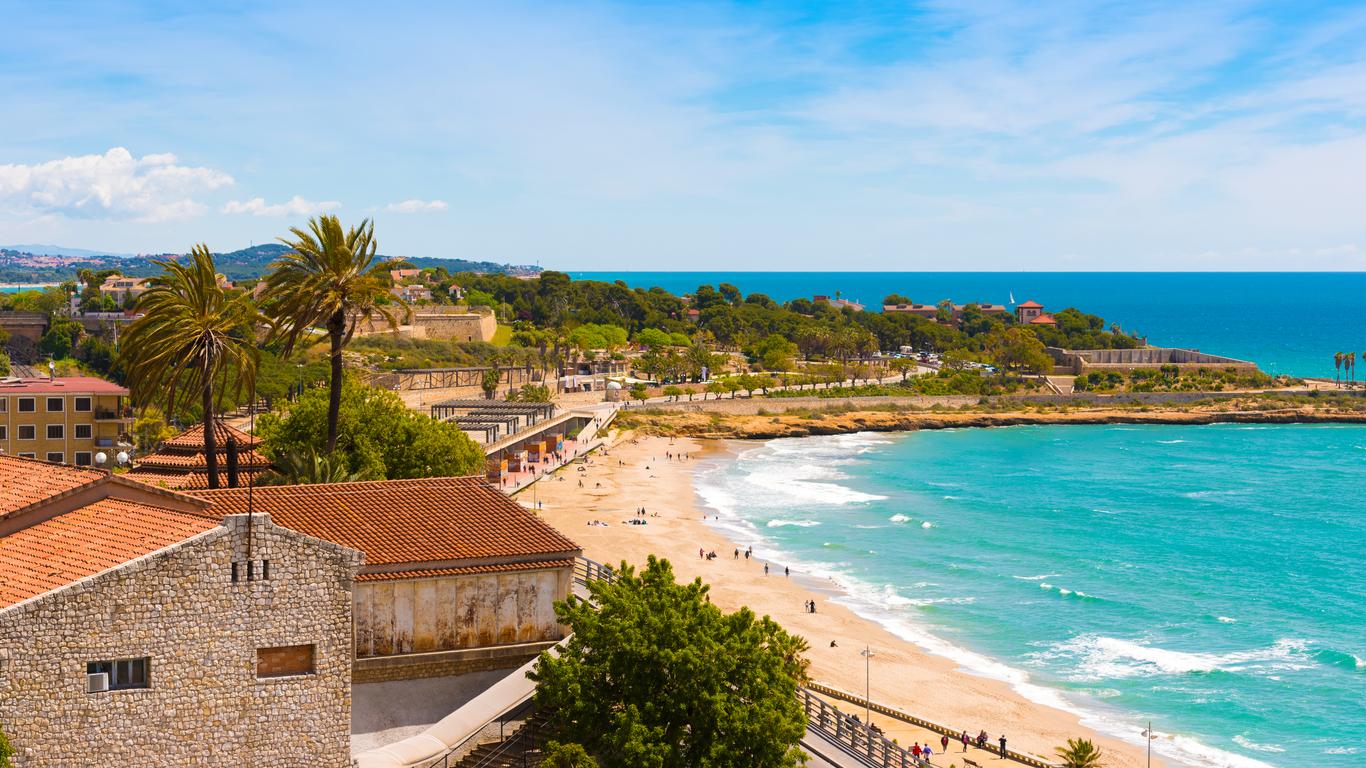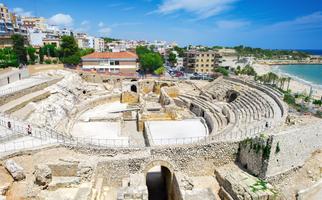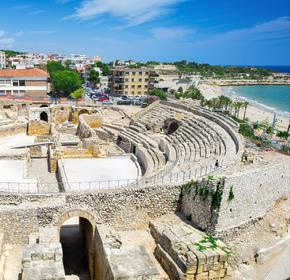1. Cathedral: Symbol of the City
Built to honor Saint Tecla, the Cathedral of Tarragona occupies the site of a former Roman temple, which was part of the provincial forum, the seat of the Tarragona government in the first century A.D. Constructed around two terraced squares, the temple was surrounded by a portico, which is now housed in the cathedral's cloister. The present cathedral, which bears Romanesque and Gothic features, was designed in the twelfth century. The spectacular entrance and rose window of the façade have come to symbolize the city. Visitors will find the Diocesan Museum and the Saint Tecla altarpiece within the walls of the church, as well as collections of Romanesque, medieval and modern religious art, including stone sculptures, wood carvings, gold and wrought-iron work, textiles, and ceramics.
2. Balcó del Mediterran: Soak in the Seascape
Standing atop the Rambla Nova along the Passeig de les Palmeres, 40 metres above the sea, the Balcó del Mediterran, is considered one of the best lookouts in all of Spain. Offering breathtaking views of the Mediterranean, the port of Tarragona, the Platja del Miracle, and the early Roman amphitheater, the balcony is popular spot among locals and tourists alike, drawing visitors to its unique railing, which is said to bring good luck.
3. Roman Amphitheater: A Tribute to Gladiators
The oval Roman Amphitheater, which was built in the second century, overlooks the Mediterranean. Carved into the bedrock, the arena can hold up to 14,000 spectators. Back in its day, it hosted gladiator fights and public executions. In 259 A.D., Fructuoso, a Bishop, and Augurio and Eulogio, his deacons, were burned at the stake in the amphitheater. A Visigoth basilica was built on the site in the early sixth century, though it was ultimately INSERT IGNOREd by the medieval Santa Maria del Miracle church.
4. Platja del Miracle: Steps from the Sea
The Platja del Miracle, which is ten minutes from downtown, can be accessed from the upper part of the Rambla Nova, as well as the steps on both sides of the Balcón del Mediterráneo, which offers striking aerial views of the beach. The sandy beach itself extends to the port of Tarragona and affords visitors a stimulating walk through the ruins of the Roman Amphitheater and a lush park lined with pines and junipers. The beach hosts several events each year, including the Tarragona fireworks, the Fiestas de Santa Tecla and the Revetlla de Sant Joan, which commemorates the summer solstice with bonfires.
5. National Archaeological Museum of Tarragona: Roman Treasures
Established in 1848 by Hernández Sanahuja, the National Archaeological Museum of Tarragona relocated to its current site at Plaça del Rei in 1960. Featuring a wealth of Roman artifacts found in Tarragona, including sculptures, ceramics, mosaics, and coins, the museum also features a library on Carrer Ramón y Cajal. Visitors can enjoy exhibits, guided tours, video displays, children's workshops and a variety of other activities. The museum overlooks the Paleochristian Museum and the Necropolis, as well as the Els Munts and Roman villas of Centcelles.





